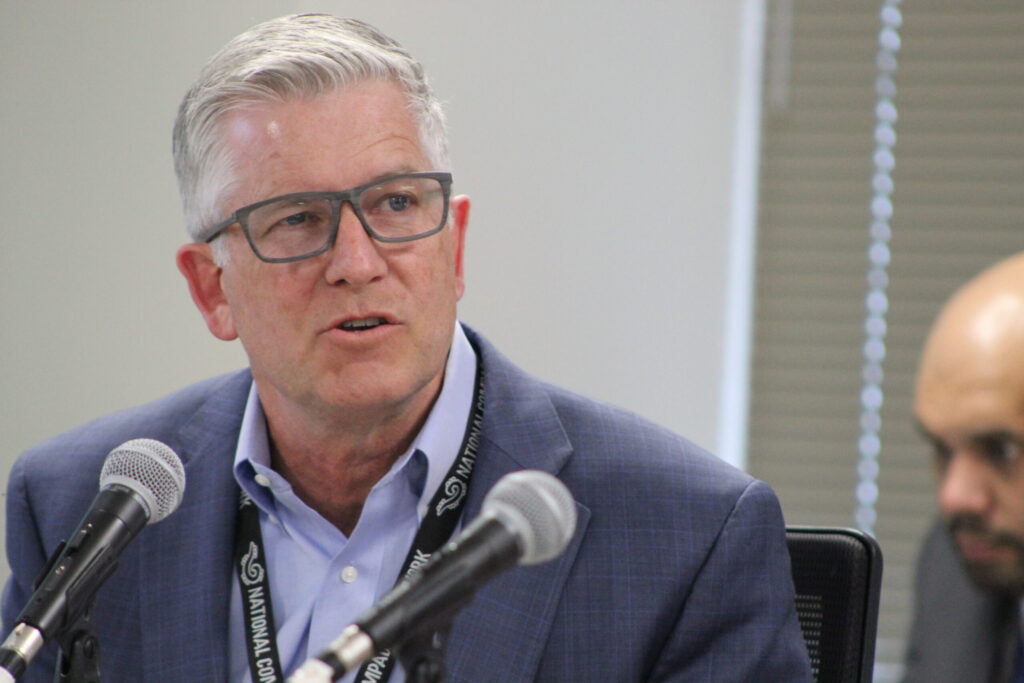Vote ‘Back the Blue’ to curb crime in Colorado | Denver Gazette
The die-hards of the anti-cop, “justice reform” movement on Colorado’s political fringe would have you believe our state was overpoliced. But try telling that to the general public.
The mere thought of it would be laughable to rank-and-file Coloradans, who have weathered an epic crime wave the past few years. Overpoliced? “If only!” they’d likely respond.
They’d be justified. Indeed, the data on the subject makes clear Colorado is, in fact, underpoliced. Which helps explain the crime tsunami that slammed the Centennial State.
Stay up to speed: Sign up for daily opinion in your inbox Monday-Friday
An analysis released this week by Colorado’s Common Sense Institute makes a strong case.
“Colorado’s number of police officers per 1,000 people has consistently lagged behind the national average,” the analysis found. “Nationally, there were 2.4 police officers per 1,000 people in the U.S. in 2023. In Colorado, there were 2.2 police officers per 1,000 people.”
Common Sense also found, “The share of Colorado law enforcement employees who are police officers shrank from 69% in 2013 to 65% in 2023.” Too many staff members, in other words, are engaged in alternative-policing programs that are more about “outreach” than about stopping lawbreakers.
Meanwhile, crime has soared. Citing Colorado’s largest city as Exhibit A, the analysis noted, “From 2010 to 2022, the crime rate in Denver rose 32%. At the same time, the number of uniformed police officers fielded by the Denver Police Department declined 15.1%.”
Bottom line: We need more cops policing our streets.
That’s why The Gazette’s editorial board enthusiastically endorses the “Back the Blue” citizens initiative, which was officially certified for the statewide ballot last week and will face voters this fall.
Known as Ballot Initiative 157, the proposal would make a one-time, $350,000,000 appropriation from the state’s operating budget to establish a “Peace Officer Training and Support Fund” within the state Department of Public Safety. The fund will pay for recruiting, training and otherwise supporting peace officers and their families.
The proposal smartly includes safeguards against inevitable attempts by lawmakers to hijack the funding. It only may be used for bona fide peace officer functions and not programs for other human services functions.
And the new fund will pay a death benefit of $1 million to the surviving spouse, children or estate of any peace officer killed in the line of duty.
Without a doubt, the overall political climate in Colorado has led to dwindling police ranks. Numerous specific factors have come into play. Misguided policies adopted by the Legislature have included withdrawing cops’ indemnification against lawsuits. Naive policies by some local governments have redirected police budgets toward “community” endeavors and away from the meat and potatoes of putting cops on patrol. It amounted to a recipe for rising crime.
The Back the Blue initiative is intended to attract more cops to Colorado law enforcement and to keep them on the job. It isn’t a panacea, but it can provide a down payment for putting more cops on our streets. The fund it will create will support wide-ranging endeavors to recruit more cops when many Colorado police departments are finding it challenging to do so on their own.
And more cops on the job will ramp up the crime fight. The Common Sense report noted how Colorado Springs bucked the trend of recent years — and was rewarded for it: Crime in the state’s No. 2 city decreased by 15.9% from 2010 to 2022 while the number of police officers fielded by the Colorado Springs Police Department rose by 5.7%.
The correlation is pretty clear: More cops = less crime.
Back the Blue, written by the citizens-advocacy group Advance Colorado, represents the kind of investment our state should have been making in its police all along. Let’s take the opportunity to make that investment now.
Denver Gazette Editorial Board











